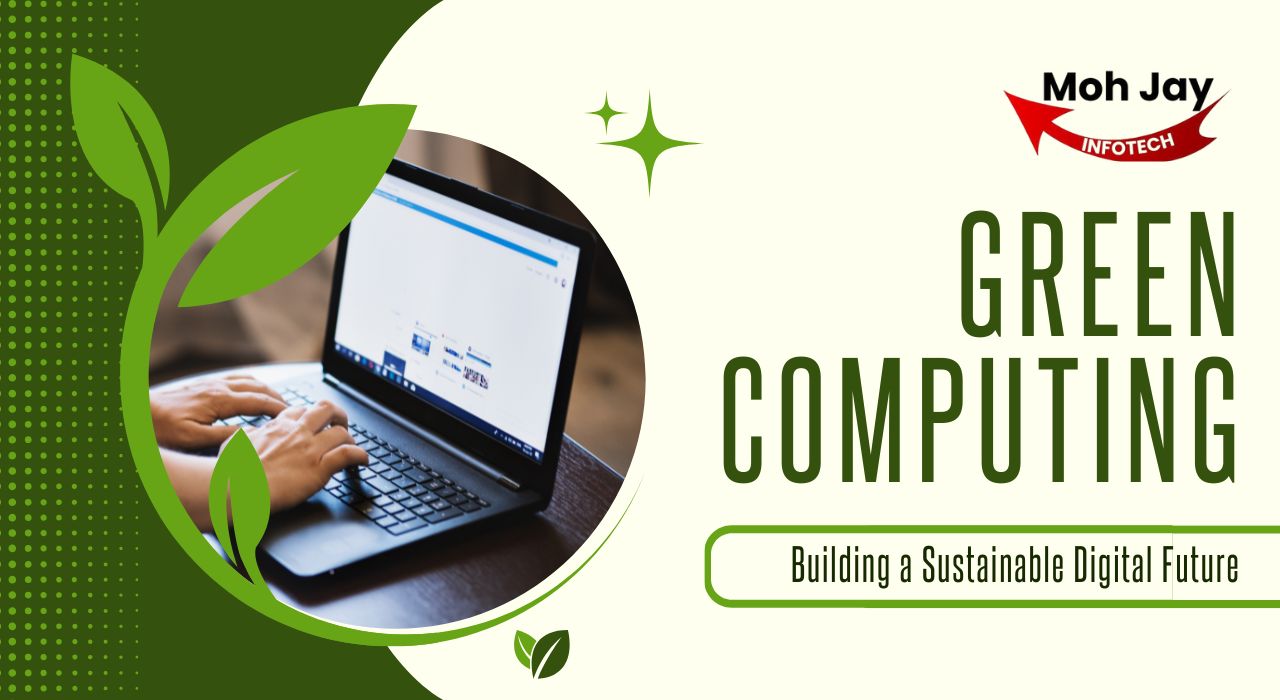The rapid growth of technology has transformed the way we live, work, and communicate. However, this technological boom has also increased energy consumption, electronic waste, and environmental impact. To address these challenges, the concept of green computing has emerged. But what is green computing, and why is it so important for businesses and individuals today? In simple terms, green computing is about designing, using, and disposing of computers and IT resources in an environmentally sustainable way. It is a practice that focuses on minimizing carbon footprints, improving energy efficiency, and ensuring responsible e-waste management.
In this blog, we’ll explore what is green computing, the benefits of green computing, and the major advantages of green computing for organizations, individuals, and the planet.
What is Green Computing?
Green computing, also known as sustainable computing, refers to the environmentally responsible use of computers and IT resources. It includes designing energy-efficient hardware, reducing paper usage, optimizing software to consume less power, and recycling outdated devices properly. The goal is to create technology that not only meets business and personal needs but also reduces environmental harm.
Some core practices of green computing include:
- Energy-efficient hardware: Using processors, displays, and devices designed to consume less electricity.
- Virtualization & cloud computing: Reducing the number of physical servers by using virtual machines.
- Responsible e-waste disposal: Recycling or repurposing old electronic devices.
- Power management: Enabling sleep modes, shutting down unused systems, and using energy-efficient power supplies.
By adopting these practices, companies and individuals can lower costs, improve efficiency, and reduce their environmental impact.
Benefits of Green Computing
Implementing green computing strategies provides multiple benefits across both environmental and economic dimensions. Some of the key benefits of green computing include:
1. Reduced Energy Consumption
Green computing ensures that devices and systems use less power. For example, energy-efficient servers and laptops reduce electricity bills while lowering greenhouse gas emissions.
2. Cost Savings
By consuming less energy and reducing the need for physical infrastructure, organizations save significantly on operational expenses. Over time, these savings can be substantial, especially for companies managing large data centers.
3. Lower Carbon Footprint
With reduced energy use and eco-friendly designs, green computing directly contributes to lowering an organization’s or an individual’s carbon footprint, helping combat climate change.
4. Improved Corporate Image
Businesses that adopt sustainable IT practices build stronger reputations. Customers today prefer eco-conscious companies, and green computing can enhance a brand’s credibility.
5. Efficient Use of Resources
Through techniques like virtualization, green computing ensures that hardware resources are fully utilized, reducing the need for additional equipment.
Advantages of Green Computing for Businesses and Individuals
The advantages of green computing extend beyond cost savings and environmental benefits. It provides long-term strategic and operational advantages such as:
1. Compliance with Regulations
Many countries now enforce strict environmental regulations. Green computing helps businesses comply with laws related to energy use and e-waste disposal.
2. Increased Productivity
Optimized IT infrastructure not only consumes less energy but also runs more efficiently. Faster systems and cloud adoption mean employees can work more effectively.
3. Innovation and Growth
Companies adopting sustainable IT practices often find new opportunities for innovation. For example, businesses leveraging cloud technologies reduce hardware dependency and explore scalable solutions.
4. Better Employee Engagement
Many employees, especially younger generations, prefer to work in companies that care about sustainability. Adopting green computing can improve employee morale and engagement.
5. Long-Term Business Sustainability
Green computing is not just about saving energy today; it’s about ensuring that businesses can operate responsibly in the future without depleting natural resources.
Examples of Green Computing in Action
- Cloud Solutions: Companies moving from on-premise data centers to cloud platforms reduce physical server usage, leading to less energy consumption.
- Paperless Offices: Using digital documents instead of printing reduces paper waste.
- Energy Star Certified Devices: Laptops, desktops, and servers with energy-efficient certifications consume significantly less power.
- Smart Power Management: Automatic shutdown of idle systems helps save electricity.
These practical examples highlight how businesses and individuals can adopt green computing easily.
The Future of Green Computing
The future of IT lies in sustainability. From AI-driven energy optimization to blockchain-powered supply chain tracking, technology itself will drive eco-friendly innovation. As businesses shift toward smart cities, renewable energy, and advanced cloud solutions, green computing will play a critical role in achieving these goals.
Governments, organizations, and individuals will continue to adopt eco-friendly practices not only as a necessity but also as a responsibility. The growing awareness of climate change ensures that green computing will be a key pillar of sustainable development.
Conclusion
So, what is green computing? It is the environmentally responsible use of technology aimed at reducing energy consumption, minimizing e-waste, and lowering carbon footprints. The benefits of green computing include reduced costs, improved efficiency, and a positive impact on the planet. Beyond these, the advantages of green computing, such as regulatory compliance, innovation, and better employee engagement, make it an essential practice for businesses and individuals alike.
By embracing green computing today, we are not only saving resources but also building a cleaner, smarter, and more sustainable digital future.
FAQs on Green Computing
Q1. What is green computing?
Green computing is the practice of designing, using, and disposing of computers and IT resources in an environmentally sustainable way. It reduces energy consumption, minimizes e-waste, and lowers carbon footprints.
Q2. What are the benefits of green computing?
The benefits of green computing include reduced energy costs, lower environmental impact, improved efficiency, better resource utilization, and enhanced corporate reputation.
Q3. What are the advantages of green computing for businesses?
Businesses gain compliance with regulations, cost savings, innovation opportunities, higher productivity, and long-term sustainability through green computing.
Q4. How can individuals practice green computing?
Individuals can adopt green computing by using energy-efficient devices, enabling power-saving modes, recycling old gadgets, and reducing paper usage.
Q5. What is the future of green computing?
The future of green computing lies in energy-efficient hardware, cloud adoption, AI-driven optimization, and eco-friendly IT policies that drive sustainable development globally.


